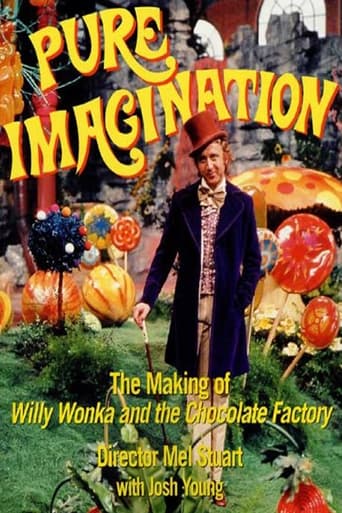Hellen
I like the storyline of this show,it attract me so much
Pluskylang
Great Film overall
StyleSk8r
At first rather annoying in its heavy emphasis on reenactments, this movie ultimately proves fascinating, simply because the complicated, highly dramatic tale it tells still almost defies belief.
Hadrina
The movie's neither hopeful in contrived ways, nor hopeless in different contrived ways. Somehow it manages to be wonderful
zetes
A small documentary from Akerman about the 1998 murder of James Byrd Jr. Interestingly, the project began as a doc about William Faulkner. The racially motivated murder occurred, and Akerman and her crew skirted on over to Jasper, Texas. It is pretty typical of an Akerman doc, in that the vast majority of it is made up of extremely long takes where nothing much is happening. Sometimes it just observes people (always African Americans in these sequences) going about their lives, a lot of times the camera is just pointed out the window of a moving car - this can actually be a tad icky, honestly, especially when the camera is pointed out the back of the car. James Byrd Jr. was dragged to death behind a vehicle, and these sequences can't help but recall that, intentionally or not. There are also interviews, which are probably the more interesting part of the film, despite being less artful. Akerman has little insight into the issue - after all, she sees herself as more an observer than a documentarian - but it's still a decent documentary.
tieman64
"The past is never dead. It's not even past." - Faulkner Belgian-born Chantal Akerman's "Sud" (aka "South") was initially a project about William Faulkner, one of American's great Southern writers. Upon hearing about the 1998 murder of James Byrd, however, Akerman rethought her project and proceeded along different lines. The result is "Sud", a semi-documentary, semi-meditative art film."Sud" opens with a series of still, long-held takes, Akerman gently easing us into small-town Texas, where James Byrd was murdered by a group of white supremacists just a year before Akerman's film was shot. The three supremacists tied Byrd to the back of their truck and dragged him for three miles. Byrd remained conscious for most of the journey, until one arm was severed and he suffered a decapitation. The supremacists then disposed of Byrd's mutilated remains at a local cemetery. His body parts were found hours later by authorities, many of his limbs still strewn across the truck's path.This abominable ordeal - the kind of macabre horror that would itself give rise to Southern Gothic Literature - is revealed to us by various locals, friends and relatives of Byrd, all of whom paint a sinister picture of white-black relations in rural Texas. It's a ghostly film, the sounds of power tools, overhead planes and lawnmowers – the banality of rural Texas – bleeding eerily into Akerman's ghostly images. Unquestionably a horror film, the director finds the spirits of the past in every shot, culminating with her torturous reenactment of Byrd's final journey. Here, Akerman's camera seems to want to reach out and touch Byrd's now invisible corpse. But it's not only that Akerman hopes to capture Byrd's cries of pain, but that every long-held shot in the film hopes to tease out the countless corpses hidden within every frame. Hate remains, horror and racial tensions still resonate, and the heroes of the American Civil Right's movement still weep. Some will find the film slow, boring even, but Akerman's reaching for a kind of sacred silence, every shot weighed heavy by the invisible dead (it's a pseduo documentary version of Kubrick's "Shining"; recall the funeral marches of that film, and its corridors of history's invisible dead).And one of those dead is Faulkner, of course, whose greatest novels dealt with racial tensions, human prejudices and the persistence of violence, almost always in the Deep South ("The Mansion", "Intruder in the Dust", "Go Down Moses", "Absalom, Absalom!", "Light in August" etc). Indeed, "Sud's" plot plays like something out of Faulkner's "Intruder in the Dust", and its overall aesthetic - a kind of melancholic stream of consciousness - heavily resembles some of the author's work. Maybe Akerman didn't cancel her Faulkner project. Maybe she found the vehicle for it.8.5/10 - Worth one viewing.
runamokprods
An odd mixing of old and new styles for Akerman. And while there are difficult, slow patches, the overall effect is shockingly powerful. For about 15 minutes the film resembles her earlier cinema photo montages that give a sense of time and place only through raw images and sound, the camera still, or slowly moving past often seemingly random images that somehow add up to a coherent whole (D'Est, Hotel Monterey). But, in Sud, suddenly there are head on interviews, a shockingly 'normal' style for this experimental film-maker talking first about racism in the South and how it has (and hasn't ) changed, and then about the infamousJames Byrd case, where, in 1998, an African American was dragged to his death for 3 miles behind a pick-up truck by a trio of young white supremacists. We realize that the town and place of that horrific murder, Jasper, is what we've been looking at. It changes our whole perspective. We follow the Byrd story through interviews with African-American friends and neighbors, white police and reporters, and by watching a memorial service for Byrd. As well as an interview about the white power movement and how it functions in the modern day world.Some of this feels rough, and almost amateurish, moving, but sometimes without focus. Yet when we get to the films last sequence, a wordless, seemingly endless drive looking backwards along the same stretch of road where Byrd was killed, black circles still painted on the road by investigators, showing where bits of Byrd's body were found, the whole piece takes on a deeply chilling and powerful resonance about racial hatred in America and the world.

